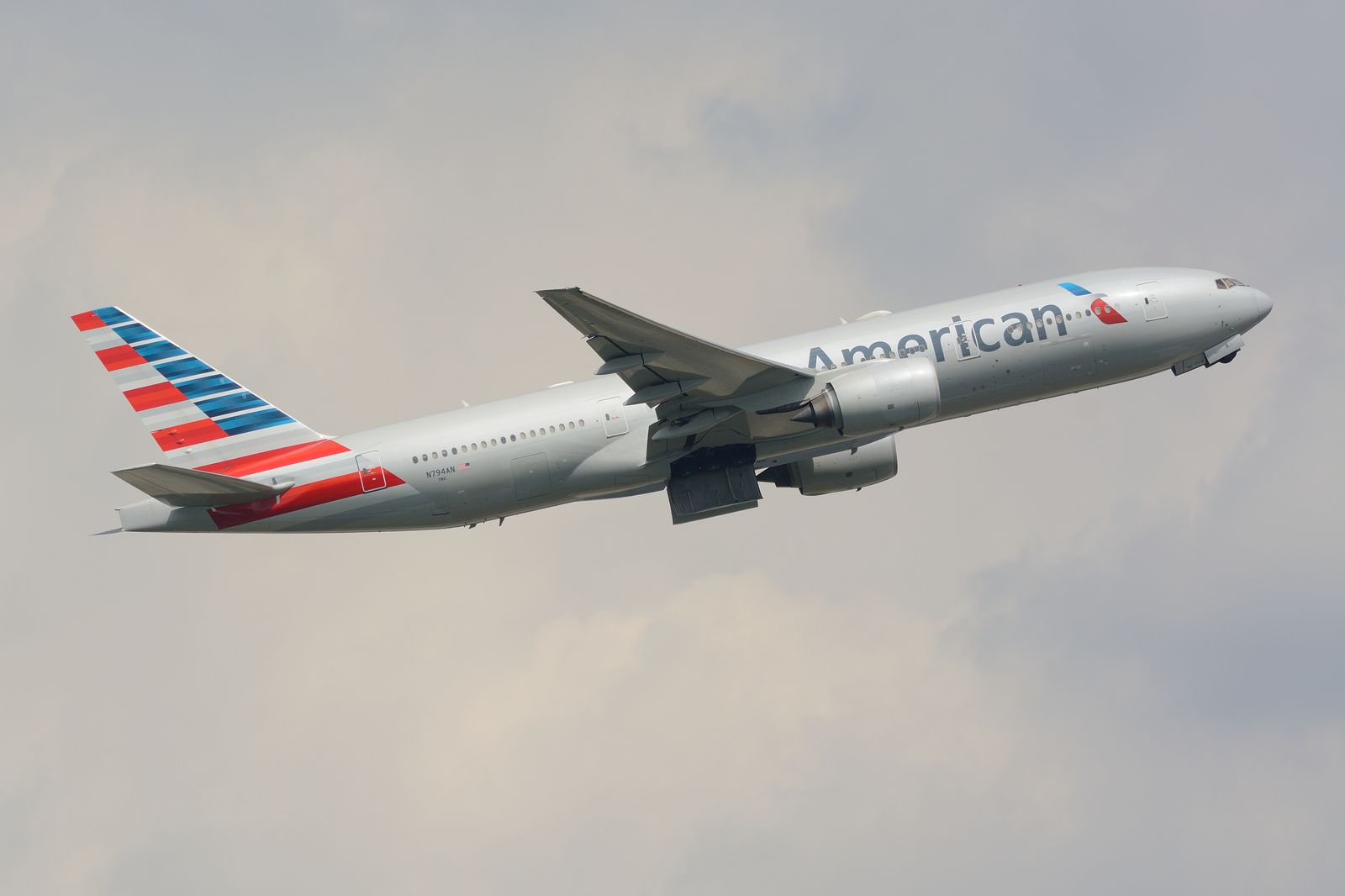When Sean Bates of Portland, Oregon left for his Sunday walk in January 2024, he could not have predicted what he would find. Lying on the side of the road was a smartphone, an already unusual sight among highway debris. It was unlocked, prompting Bates to investigate; after doing so, he learned the device had fallen 16,000 feet from the cabin of Alaska Airlines Flight 1282.
The item was among many that the National Transportation Safety Board (NTSB) tasked citizens with finding after Flight 1282’s emergency exit door burst open mid-flight. For Boeing, the manufacturer of the 737 Max used for the flight, this controversy is just one of many facing the company. Boeing has faced widespread scrutiny since 346 people were killed in 2018 and 2019 in the two deadliest 737 accidents ever: Lion Air Flight 610 (which crashed in Indonesia in October 2018) and Ethiopian Airlines Flight 302 (which crashed in Ethiopia in March 2019).
In the wake of such high-profile accidents, Boeing has seen massive drops in demand for its planes, and Americans’ faith in air travel safety has worsened. While the company may hope this downturn is just an anomaly and not the new normal, the US aircraft industry has rarely faced such turbulence.
For years, the US government has directly supported Boeing’s sales. As the government’s sixth-largest defense contractor in 2024, Boeing has been promoted by administrations as different as those of Obama and Trump. In part, the government’s Export-Import (EXIM) bank finances global airlines’ purchases of Boeing planes; EXIM helps US businesses “export their goods by providing financial assistance in the form of loans, loan guarantees and insurance.” At the same time, agencies like the Federal Aviation Administration (FAA) extend extra-regulatory forgiveness and even special advisory roles to the Seattle-based company.
These policies have made Boeing the de-facto aircraft manufacturer of North America. The company’s main rival is Europe’s aircraft-making giant Airbus, which surpassed Boeing in sales in 2024 despite falling behind in 2023.
Despite governmental support, Boeing is struggling. Amid disaster, disruption, and plenty of scandals, US airplane manufacturers and airlines are in a pivotal position in 2024. Pitted against international competitors, can US air travel continue to thrive?
A Decade of Disarray
Before the missing door incident in January 2024, tensions around plane manufacturing were already bubbling.
At the turn of the millennium, Boeing began outsourcing 70 percent of research, development, and manufacturing to outside firms. Formerly done in-house, R&D became managed by partners across the United States, whose main concern is efficiency, not quality.
In 2024, these shortcuts have faced massive scrutiny, including a Boeing whistleblower alleging that they led to massive safety oversights and catastrophic design failures. Phil Condit, former Boeing CEO, said on January 9, 2023 that without “real honest-to-God” product development, the company would soon lose track of how to do its own work. Just over a year later, a series of events in March may have proved Condit correct.
In a letter to Congress, Boeing admitted that it could not find service records on the plane whose door dislodged in January, complicating investigation into the incident. The admission came in the midst of various poor inspections conducted by the FAA, and it revealed the true magnitude of Boeing’s outsourcing.
In response, United Airlines CEO Scott Kirby said the company may not buy future iterations of the 737 Max, and in March, Airbus beat Boeing to 65 jet orders from major Asian airlines.
The company is clearly struggling, and it would seem that the first step to rectifying these woes is bringing manufacturing back in-house. However, that task is easier said than done, especially as the company recovers from an enormous, 53-day strike.
In September, a majority of Boeing’s 33,000 union member employees went on strike, halting production at the company’s major plants and delaying the rollout of its new 777x from 2025 to 2026.
For the workers, the biggest demands had little to do with recent plane failures. Instead, they focused on a pension program axed by Boeing ten years ago, alongside a 40-percent general wage increase. As the strike neared its two-month mark, the company reported third-quarter losses of US$6.2 billion dollars.
The strike officially ended on November 4 after 59 percent of voting unionized workers approved a contract that includes a 38-percent wage increase over the next four years, along with productivity and other bonuses. However, production recovery has been incredibly slow. This recent strike was 53 days; after Boeing experienced a 58-day strike in 2008, it took nearly a year for production to recover. Therefore, it will take months for Boeing to consider this crisis averted. If Boeing fails to recover from the strike and address ongoing safety concerns, it may lose its biggest ally: the US government.
Emergency Landing
In May 2024, the US Department of Justice (DOJ) readied criminal prosecution against Boeing in response to the Alaskan Airlines door plug malfunction. This DOJ investigation was the second into the company in the last four years, marking a stark change from the government’s previous “cozy” relationship with the aircraft giant.
This tension quickly turned into scandal as shocking news reached the headlines. In a period of mere weeks, two whistleblowers alleging manufacturing malpractice, John Barnett and Joshua Dean, passed away unexpectedly. Barnett died by suicide; Dean, from illness. Immediately, suspicions arose regarding Boeing’s possible involvement.
Meanwhile, across the globe, families of Lion Air Flight 610 crash victims began to work with US prosecutors on a legal strategy, seeking reimbursement in court.
Both of these controversies eventually became part of the ongoing DOJ investigation of Boeing, a case that centered on accusations of fraud during the design process of the 737 Max. In July, the company agreed to a plea deal in the case, believing that a high-profile lawsuit would only damage the company’s image. However, in the deal, the company paid just US$243.6 million, a far cry from the US$24.7 billion the survivor group’s attorney Paul Cassell demanded.
Echoing these frustrations, a group of US senators including Elizabeth Warren and Richard Blumenthal called upon the Department of Justice to crack down heavier on Boeing, moving further than just a plea deal. Despite decades of snug relations between the federal government and Boeing, the senators proposed heavier fines, action against executives, and manufacturing overhaul.
A recent twist in these legal proceedings has plunged Boeing deeper into uncertainty. On December 5, a federal judge rejected the plea deal finalized by Boeing and the DOJ, citing diversity, equity, and inclusion (DEI) concerns related to the oversight of Boeing’s adherence to the agreement. Boeing and the DOJ were given 30 days to decide whether to renegotiate the plea agreement or proceed to trial. Cassell referred to this development as a victory for victims and their families: “Judge O’Connor has recognized that this was a cozy deal between the government and Boeing that failed to focus on the overriding concerns—holding Boeing accountable for its deadly crime and ensuring that nothing like this happens again in the future.”
This legal quagmire, alongside Boeing’s other high-profile scandals, emphasizes the isolation the company now faces. Falling behind in sales relative to global competitors and losing the support of the government—its biggest ally—Boeing has no choice but to reform.
Reevaluating and Refueling
The first step is to stop outsourcing. During the FAA’s audit of Boeing in May, the company failed 33 of 89 audits conducted. The audit also investigated employees’ understanding of the manufacturing process, with the average test score of six company engineers landing at just 58 percent.
Boeing’s decades of outsourcing have brutally endangered its manufacturing ability. However, the effects outsourcing has had on the company’s technology may be worse.
Boeing’s Maneuver Characteristics Augmentation System (MCAS) is an in-flight software system intended to help stabilize planes in emergency situations. However, the development of this software has been outsourced to temporary-hire developers overseas, paid as low as US$9 an hour to create this life-saving tool. Notably, a faulty sensor in MCAS contributed to the deadly crashes of both Lion Air Flight 610 and Ethiopian Airlines Flight 302, suggesting a causal link between low-quality, outsourced production and safety catastrophes.
These issues have put Boeing’s relationship with multinational airlines on shaky ground. When eight incidents took place on United flights in early March—five of which on Boeing-manufactured planes—airline leadership implied that the makeup of their fleet of planes may need re-evaluating.
Despite all of Boeing’s struggles, its position in the international commercial airplane market continues to hold, and the threat of new competitors is minimal. The barriers of entry to the commercial aircraft industry are enormous; therefore, even at reduced capacity, Boeing has few competitors and remains one of the two main commercial aircraft production companies in the world.
Even if new competitors emerged, they would struggle to pull market share from Boeing and Airbus, in part because it is very difficult for airlines to switch aircraft manufacturers. Brazil’s Embraer and China’s COMAC—two of the largest jet-makers besides Boeing and Airbus—have yet to enter the large-scale commercial jet business, continuing to take orders for narrow-body and regional planes. Airbus is also facing roadblocks of its own, so capitalizing on Boeing’s government-mandated production gap is easier said than done.
Getting Boeing back on track is therefore feasible for Kelly Ortberg, Boeing’s newest CEO. Appointed in August, he has already announced a slash of 10 percent of the company’s global workforce and plans to raise over US$25 billion in new funding.
Whether or not these steps can stabilize Boeing remains to be seen. However, for a floundering company, any gains on the international market are a step in the right direction.
Technology Takeoff
While US manufacturers struggle to assert dominance in the commercial aircraft market, US airlines have experienced their own unique struggles.
Over the busy 2022 holiday travel season, Southwest Airlines announced that 60 percent of its flights would be canceled. The stated reason was a “perfect storm” of winter weather; however, the issues run much deeper than that.
Of all US airlines canceling flights for the winter in 2022, Southwest led the way with over 5,500 flights canceled in a two-day span (December 25-27). Delta was second with just 311 cancellations in the same time window.
The cause of Southwest’s disproportionate woes was technology, not the weather. Southwest’s business model has always followed the “low-cost strategy”: reducing prices by flying to smaller airports with shorter routes and trip durations, allowing high-density seating with fewer amenities. Notably, this strategy included opting for budget-friendly tech solutions, causing slow adoption of new advancements. Former Southwest pilots claim that the airline’s operations have not changed since the 1990s, an issue that cost the company US$75 million during a service outage in 2021.
For years before the 2022 meltdown, Southwest’s internally built SkySolver employee scheduling software broke down during mild weather events. CEO Robert Jordan admitted the need to “modernize,” yet the holiday disaster proved a lack of change.
Fixing the program will be expensive. The airline announced in March 2023 that it would upgrade its crew-scheduling software and broadly increase employment before the busy winter season. However, after increasing employment from 66,600 to 75,000 workers in 2023, Southwest now aims to cut 2,000 workers by the end of 2024, offering buyouts and leaves of absences. The airline has blamed a shortage of new aircraft from Boeing for “overstaffing in certain locations.” When it comes to stabilizing Southwest, it is not just domestic holiday travel at stake, but more importantly, survival in the fierce global air travel market.
Holiday issues were only the tip of the iceberg for US air carriers, which have been outpaced in revenue growth by international competitors since 2019. What the holiday outage did reveal is the degree to which US carriers lag behind in terms of technology. However, US airlines’ recent innovations help mitigate these technological weaknesses.
In 2019, United Airlines announced the launch of a new AI-powered technology known as ConnectionSaver. The company described ConnectionSaver as a tool designed for customers, allowing them to track flights across the country. However, the tool is just as much built for airlines, facilitating the delay of departures to ensure consumers make their connections.
By preventing missed connections, the program has increased United’s efficiency and reduced excess fuel use. United, however, is not the only airline putting the “AI” in “air.” Alaska Airlines formed an agreement with Flyways AI in May 2021 to maximize flight path efficiency. American Airlines similarly partnered with Microsoft in 2022 to revamp its back-end technology.
One of the most visible tech overhauls is another American Airlines project known as Smart Gating. To reduce time spent taxiing on the tarmac, Smart Gating identifies the optimal gate for incoming planes, saving 17 hours per day in taxi time and 1.4 million gallons of fuel per year.
These approaches remain experimental, but they have already shown promising results for US air travel. Continuing to innovate—in the air and on the ground—may soon become an urgent necessity not only from a competition perspective, but also to safeguard the wellbeing of passengers.
Turbulent Trends
In May, when Singapore Airlines Flight 321 made an emergency landing due to turbulence in Bangkok, one person was killed and many more were injured. The incident was an anomaly—one of just a few contemporary examples of extreme turbulence causing aircraft emergencies—but experts are sounding the alarm that heightened turbulence may become the new normal.
A 2024 study found that annual clear-air turbulence has risen 55 percent over the North Atlantic—one of the busiest flight paths in the world—since 1979. Given that warmer temperatures contribute to turbulence, global warming may be affecting plane stability.
For airlines already grappling with the environmental consequences of planes, the discovery of how climate change threatens air travel should serve as a wake-up call. Proposals from hydrogen power to e-fuel have bounced around the air travel community, but none have received mass endorsement.
Promising climate-friendly flying could be a path back to industry dominance for US carriers. However, the future remains uncertain. US airlines and commercial aircraft manufacturers will have a lot on their plate in the coming decades. Navigating this turbulent chapter will be a difficult process, so it will be crucial to take things one flight at a time.





